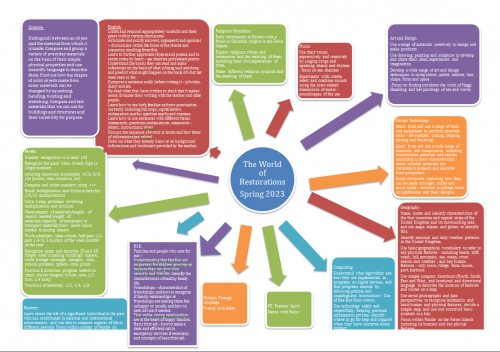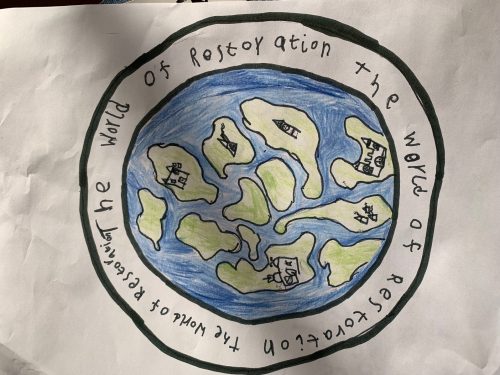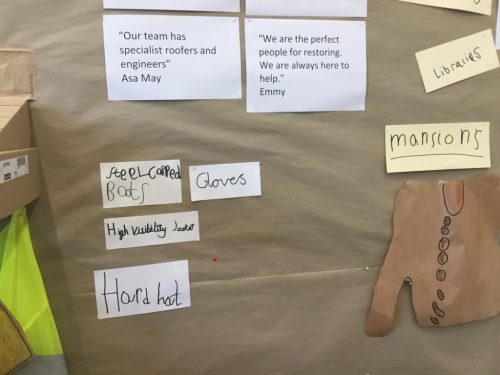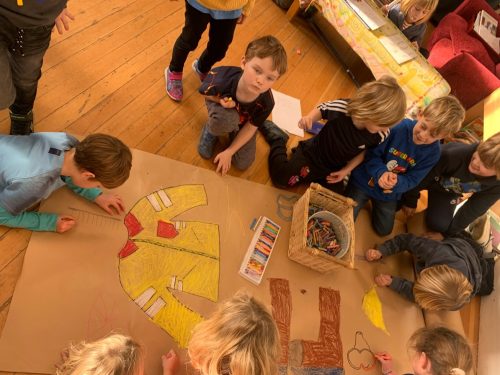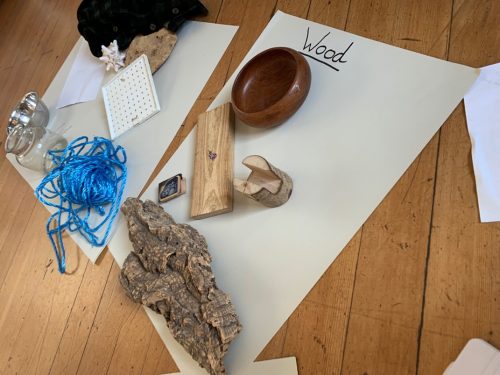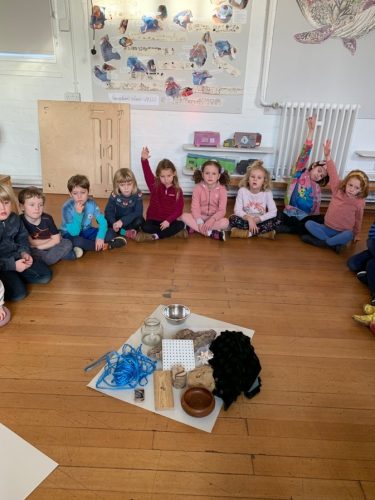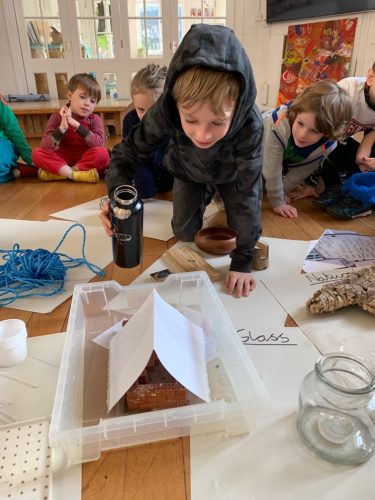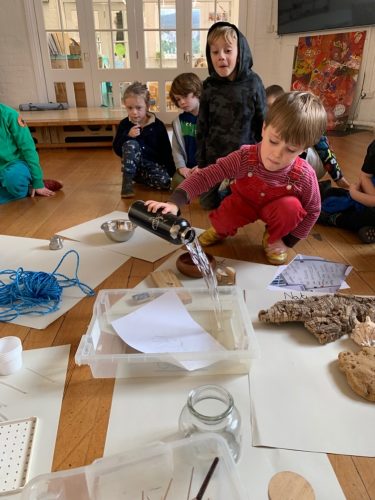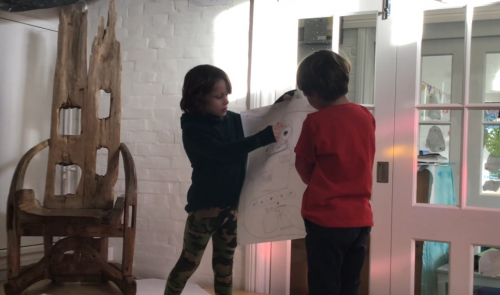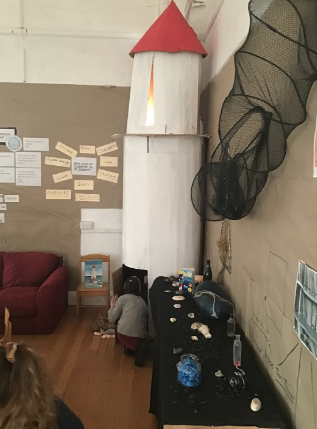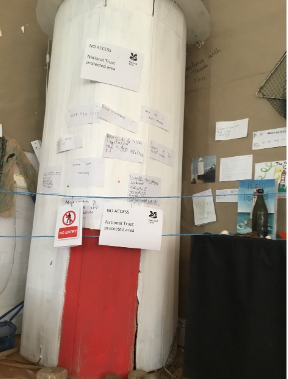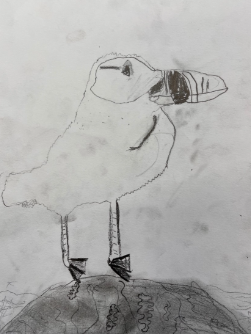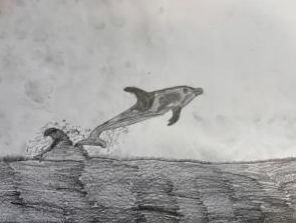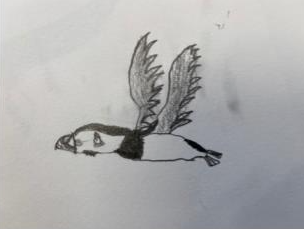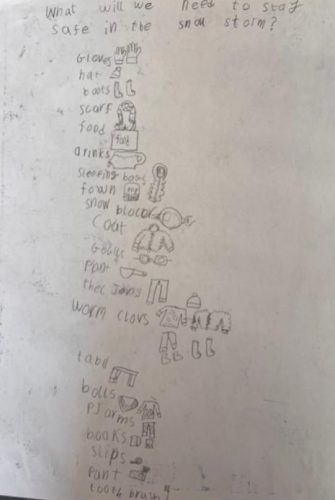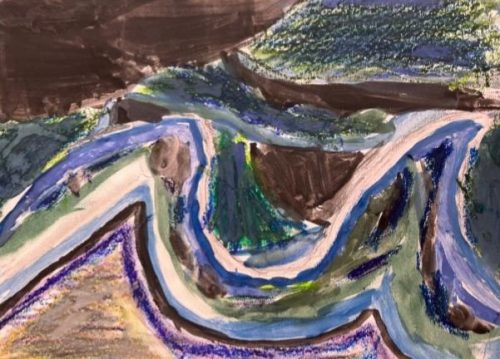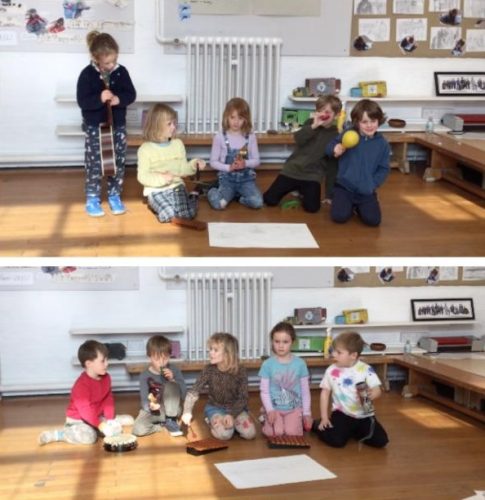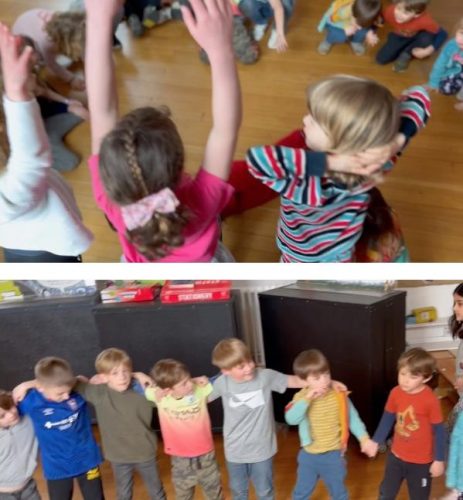Weeks 1 and 2
Welcome back and happy new year!
Children arrived into school to find a letter addressed saying a quality inspection would be carried out for our restoration company. We discussed what restoration means, and then wrote about different restoration projects that we have previously completed and what sort of buildings we normally restore. We discussed as a group why restoration is important, and that it helps to preserve a piece of history in particularly old buildings.
We made ID badges, drew out and labelled equipment that we would need to use in the business, and decided the name of the company – The World of Restoration.
After establishing our company name and individual job roles, we spoke about how we can keep ourselves and other people safe around the tools and equipment we use, and then created a list of safety instructions for all staff and visitors to follow!
The next thing to consider was building materials and their suitability for purpose. We looked at what materials might be suitable for different scenarios in our company using different objects we found around the classroom, and then grouped them based on the material type and their physical properties. We looked at paper, wood, rope, stone, metal, plastic, brick and glass. We then discussed the properties of these materials – are they opaque, translucent or transparent? Are they absorbent or non-absorbent? Hard or soft? Stretchy of stiff? After thinking about these we were then able to describe the type of materials that would be suitable for a variety of restoration jobs we might need to undertake – for example fixing a broken roof, replacing smashed windows, rebuilding a castle wall, and fixing a leaking pipe.
Weeks 3 and 4
A quality inspection from Quality Restoration Contractors was undertaken at our headquarters, where we were introduced to Sarah Wells (teacher in role) who works for the company. We were told of the opportunity of a new restoration project that is of historical importance; however, the company is trying to decide whether to use us or another competing company. The job needs people who are trustworthy and like a challenge. After holding a company meeting, we discussed ways in which we can secure the new job. We designed droids that we can use to inspect buildings for safety and then wrote about their features, and decided it would be useful to write letters to Quality Restoration Contractors explaining why we are the perfect people for the job. Children each took turns at verbalising their ideas and composing their sentences orally before writing, drawing on their prior knowledge in the context of the Mantle and using information provided in the classroom. We thought about the features of persuasive writing, and used persuasive words and phrases to prove that we are perfect for the commission. Here are some of our ideas:
“We love learning about the history of buildings”
“As you will see, we love working as a team and always help everyone we can”
“We are the perfect people for restoring. Our team has specialist roofers and engineers”
We were delighted when we heard back from Quality Restoration Company saying that we had been chosen for the new project. An envelope arrived at our headquarters with a map and an information pack all about The Farne Islands. Using a map of the UK, we marked out where The Farne Islands are, and looked at the surrounding seas around the UK. We used simple compass directions to see that the Farne Islands are North-East of the United Kingdom. We then marked out where Bealings village and Ipswich town are, and also highlighted London as the capital city of England. We looked at different routes to get to the Farne Islands, and different travel options. Ipswich to Bamburgh (before taking a ferry to the Farne Islands) is 335 miles. To put this into some context, we calculated that one mile is the equivalent distance of 14 laps around our school field. We then found that the distance of Ipswich to Bamburgh would be equivalent to walking 4690 laps around the school field!
As we near the new and exciting journey to the Farne Islands, we have created our own travel journals to record our journey, activities, thoughts and feelings around this new project.
Weeks 5 and 6
Children arrived into the classroom to find a lighthouse assembled, along with some old fishing nets, shells and rocks. This indicates that we have arrived at the Farne Islands (specifically Longstone Rock), and the lighthouse is the restoration project we must undertake.
Many questions were prompted, and children were encouraged to write these thoughts down and leave them at the door of the lighthouse:
Still having some uncertainty on what lies ahead for the project, we wrote individual journal entries detailing the arrival at the islands and our current thoughts and feelings. Dramatic convention was used to narrate these ideas; here are some excerpts:
“When I got off the boat I felt the breeze. It was so foggy, we couldn’t see a thing. Then we heard a noise – it was like a fog horn.”
“I felt the wind against my cheeks as I spotted a broken window – what else was wrong?”
“It was a dusty old lighthouse.”
“When we eventually got to the island it was beautiful. It took my breath away.”
“It was getting late when I found shelter and went to sleep in the cold air. I closed my eyes, and finally got a good night’s sleep after a day’s tiring work.”
Whilst we have been recording our thoughts and planning on how we can restore the lighthouse and who to speak to about it, we arrived back a couple of days later to find that we had been banned from entering due to it being a National Trust protected area.
An urgent company meeting was called to try and establish what has happened and what we can do next. Questions were raised – is there life in the lighthouse? Could there be an endangered species living inside? Why has it been shut down? Perhaps if the lighthouse has been abandoned, animals might be living in it and the National Trust won’t want the animals to be hurt.
We reached out to the National Trust Rangers, who live on the island for most of the year, and explained that we care about the wildlife on the island, and do not want to cause any harm to it. Whilst waiting for a response from them, we started to think about the wildlife that lives on the Farne Islands. Using photocopies form information books, we worked in groups to find out about the land and sea life around the islands. Children annotated the pages, and then discussed their findings with the team. Our research shows a range of different species that inhabit the islands, including fish, birds and mammals. From this, detailed observational drawings were created to represent these animals.
Since we are still waiting to hear back from the National Trust, we started thinking about how we can estimate the height of the lighthouse. Children each estimated in their own terminology how tall the house could be – for example, 10 chairs stacked on top of each other, 3 times the height of someone in the team, a small tree, or a double decker bus. We then introduced measurement using rulers and meter sticks.
Weeks 7 and 8
The National Trust contacted us, and agreed to allow us to restore the lighthouse as long as we did some of the work offsite to avoid disrupting the puffins. They also invited us to help with the annual puffin count, which is something that has been surveyed on the Farne Islands for a long time.
With the children in role as the National Trust rangers, we went outside and carried out the annual wildlife count. We looked for puffins, guillemots, arctic terns, kittiwakes, Atlantic grey seals and white beaked dolphins.
Children collected this data using tally charts, and then created their own pictograms to show this. We counted in fives and ones to represent how many of each animal we saw – a large picture showing five of the animal, and a small one showing just one. From this, we were able to write statements about the data we collected – here are some examples:
“There are the same amount of Atlantic grey seals as there are kittiwakes.”
“We counted the most puffins and the least white beaked dolphins.”
“We counted 12 more arctic terns than we did guillemots”.
After the wildlife count, each child created a clay model of one of the animals on the island.
Using these models, we created a map of Longstone Island, labelling the geographical features on the island (coast, cliff, beach, land) and the surrounding North sea. We each took turns to place our animals on the island depending on where they would typically be seen on the island.
Our travel journals were updated, detailing our success with the National Trust and describing our feelings for the project ahead!
Weeks 9 and 10
Our week started with worry across the team, as we received a Red Weather Warning from the Bealings Weather Watchers (reception class) telling us of a snowstorm heading for Longstone Island. After researching exactly what this means, we discovered that this means dangerous weather is expected, and people are advised to take action to keep themselves and other safe. With this in mind, we chose to take shelter in the lighthouse ground floor as although some restoration is needed, it is a stable structure and the cylindrical shape helps to reduce the effect of wind. This led to us investigating properties of 2D and 3D shapes, too.
We studied the seasonal and daily weather patterns in the United Kingdom, creating our own weather symbols and talking about what we associate with each season.
After deciding to take shelter in the lighthouse, we discussed what supplies we would need to stay safe in the snowstorm. Dramatic convention was used to show what supplies we were using, and then lists were written:
We also wanted to check that the lighthouse was safe for us to enter, so programmed a robot (Bee Bots) to go into the lighthouse and inspect for safety before we entered. To do this, we planned out routes on gridded paper, and then wrote a list of directions for the Bee Bot to follow. We used language such as quarter turn, half turn, forward, backwards, clockwise and anticlockwise.
Keeping with the theme of storms and stormy seas, we looked at the work of artist Maggi Hambling – a Suffolk born artist who has created a selection of watercolour and acrylic paintings depicting waves crashing. We discussed the use of colours and movement within specific pieces and how they made us feel. With the use of watercolour paper, oil pastels and watercolours, children created their own works of art, interpreting the stormy seas and crashing waves.
We also looked at how we can use similes to create more descriptive pieces of writing. Children took turns to use imaginative words to depict the storm, then found similes that matched this.
“As wild as a whirlpool”
“As dark as the dark side of the moon”
“As loud as a lion!”
Children also experimented with sound, creating soundscapes of the storm. We thought about how we could use our voices, bodies and percussion and tuned instruments to create a story with sound. Children got into groups, and each assigned themselves the role of one sound in the storm – for example, wind, rain, thunder, waves. Working collaboratively, we then build up the arrangement for the soundscapes and how these would develop. We looked at what standard music notation looks like that represents; then children had a go at designing their own music symbols and notation to help guide them in the soundscape. This process resulted in some imaginative and emotive sound stories from all the team!
After taking shelter from the storm, children came out of the lighthouse to find the destruction that had been caused. Amongst this, an old life ring had been washed up, saying “Forfashire 1838”.
Due to the extensive research that our team has carried out on the Farne Islands, this prompted us to recall that the Forfashire was a shipwreck (one of many around the islands) near to Longstone Island and that a lighthouse keepers daughter named Grace Darling had been responsible for the rescue of nine people on board the ship. Knowledge from previous focuses within Mantle of the Expert approach also prompted children to think about the year 1838, realising that this was part of the Victorian Era. We created a timeline to show how many years ago this would have happened, and discussed changes from times back then to present day.
Through the use of dramatic convention, children went into role as Grace Darling and put themselves in the position that she had been in on the night of the Forfashire shipwreck. We thought about how she would have felt when initially spotting the shipwreck when she was on lookout, and what further thoughts and conversations with her parents would have led to her going out in a rowing boat to try and save as many people as possible. Children took it in turns to act as both the waves and stormy seas, and as Grace and her dad paddling out onto the water.
This helped us to really imagine the whole setting in this context, and we used these experiences to help write a diary entry from the points of view of Grace Darling, taking into consideration all the mixed feelings she would be experiencing about feeling terrified of the storm but still feeling that she had to try and save the people on board.
Week 11
Now knowing what we do about the Forfashire shipwreck and Grace Darling, we discussed the situation from the point of view of Grace’s mother, who was reluctant to let her go out to sea for the rescue. We spoke about why her mother would be concerned, and related this back to our own experiences with family life and what this means. We thought about
what her mother might have tried to say to Grace to deter her from venturing out, and also why Grace still felt that she had a duty to go anyway. From this, we talked about people who care for us and the characteristics of a healthy family life. We came up with a list of mutual descriptions for what this means, and children then went on to draw and label their own pictures of what a happy family might look like, and that sometimes families might look different from ours, but we can still respect those differences and know that all families are characterised by love and care.
Restoration jobs on the lighthouse completed, National Trust wildlife check carried out and the uncovering of the Forfashire Shipwreck along with discovering all about Grace Darling and her rescue efforts with her family; we are so proud of our work this term as a team. Thank you to every child and adult who has helped with creating such an engaging and exciting learning context this term. We are all sad to say goodbye to the Farne Islands, its wildlife and Grace Darling, but look forward to the new term and our next adventure. We wish you all a wonderful Easter break!
Alice, Becky, Jen and Frankie x
